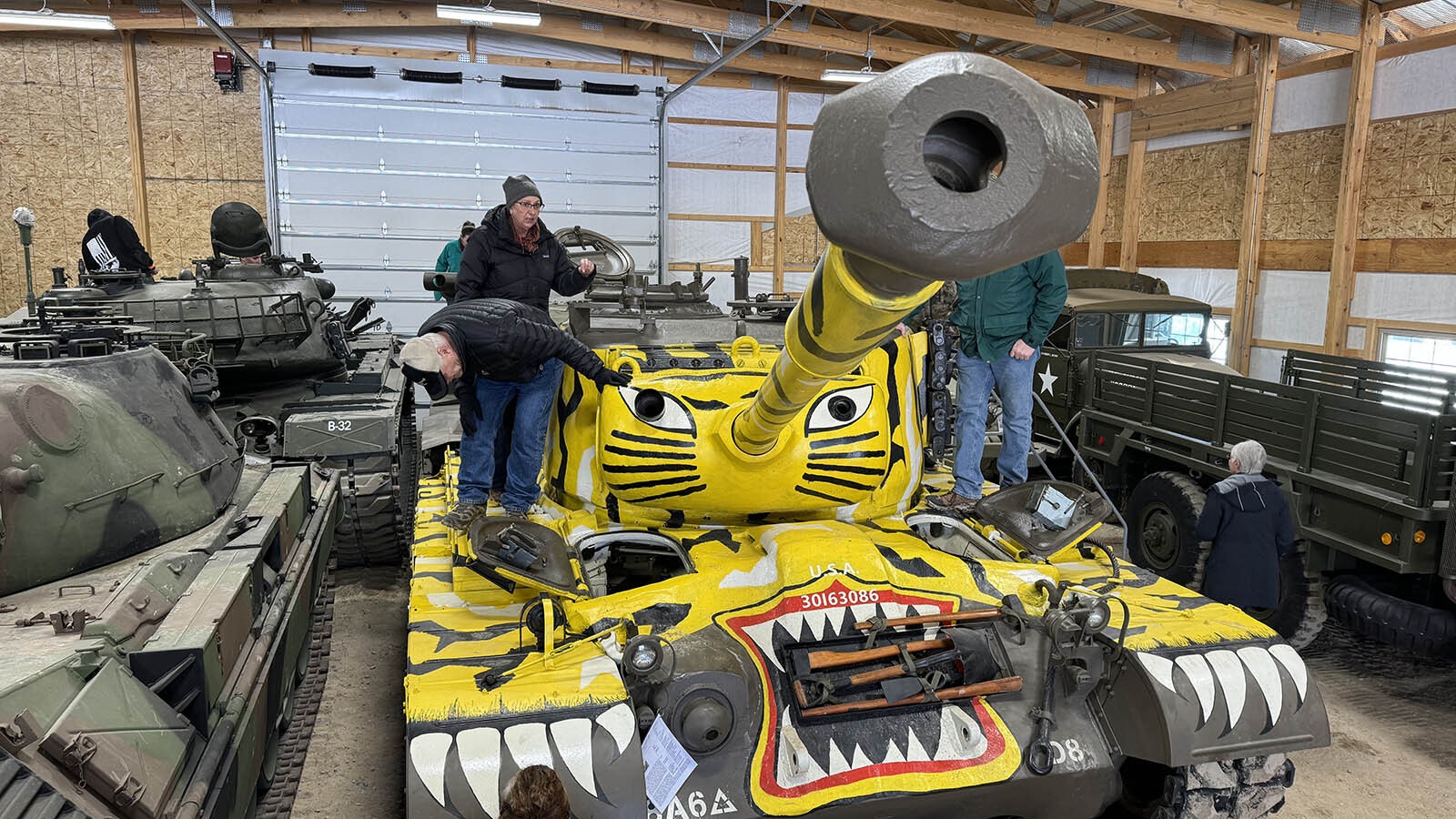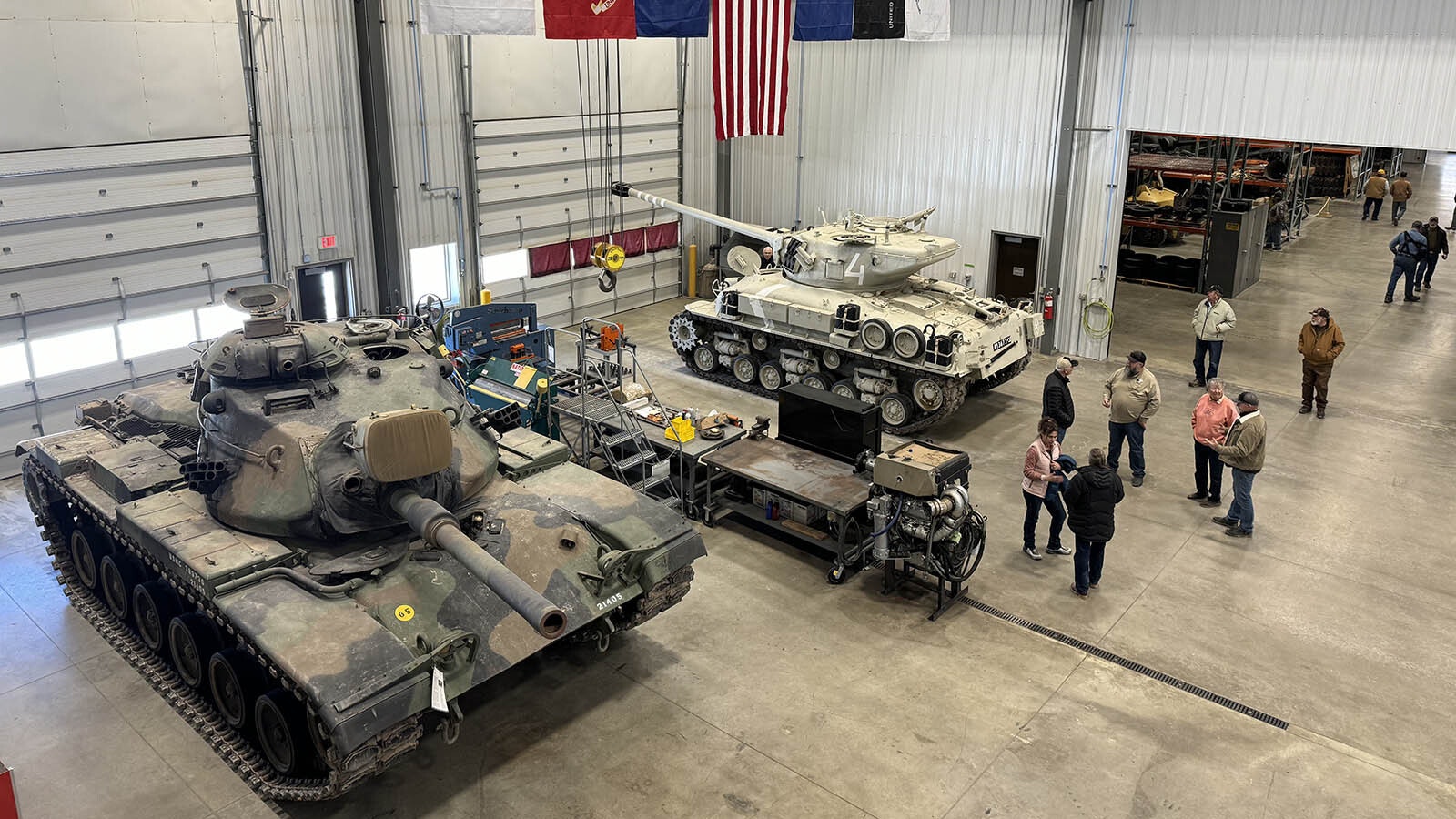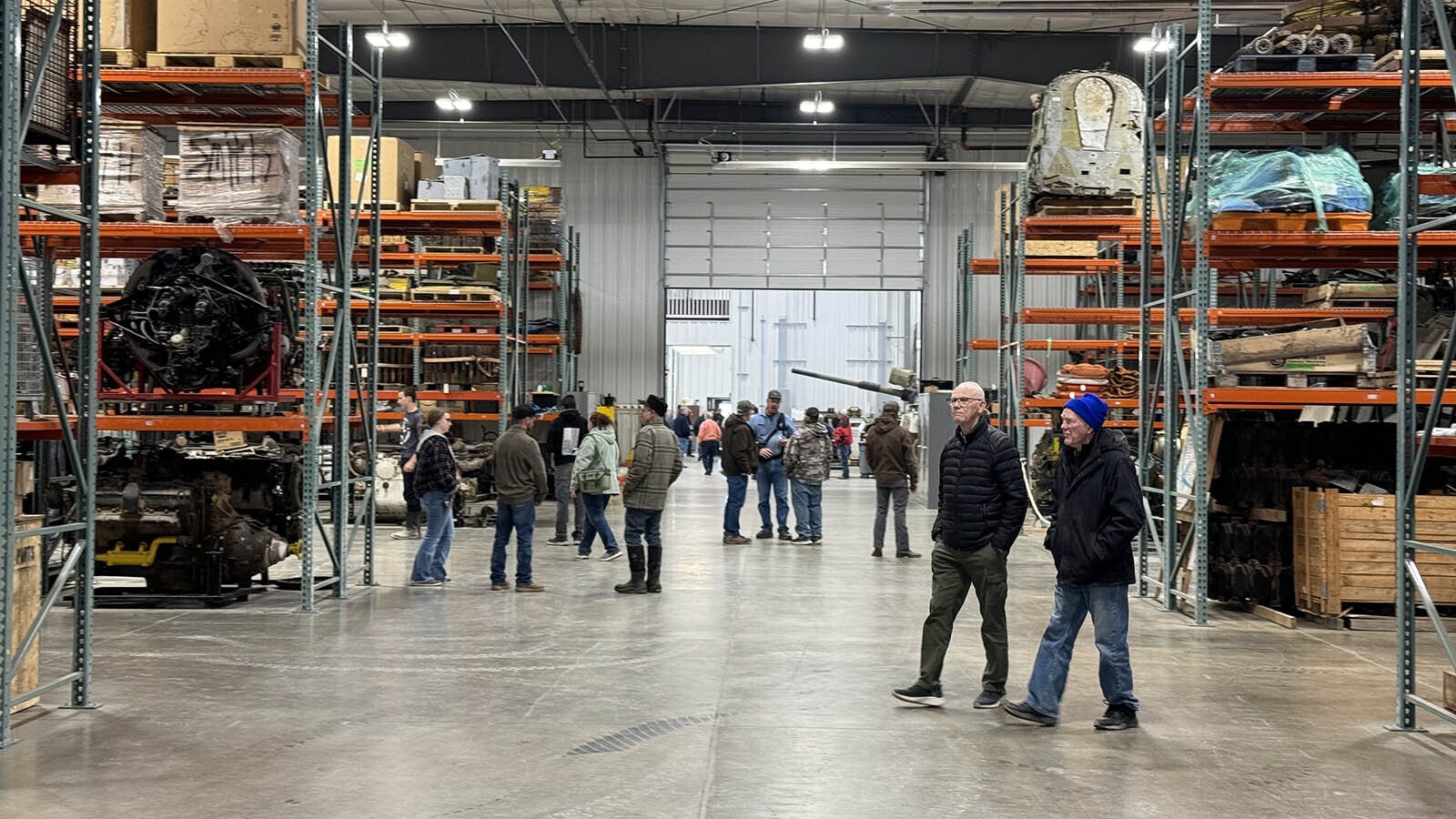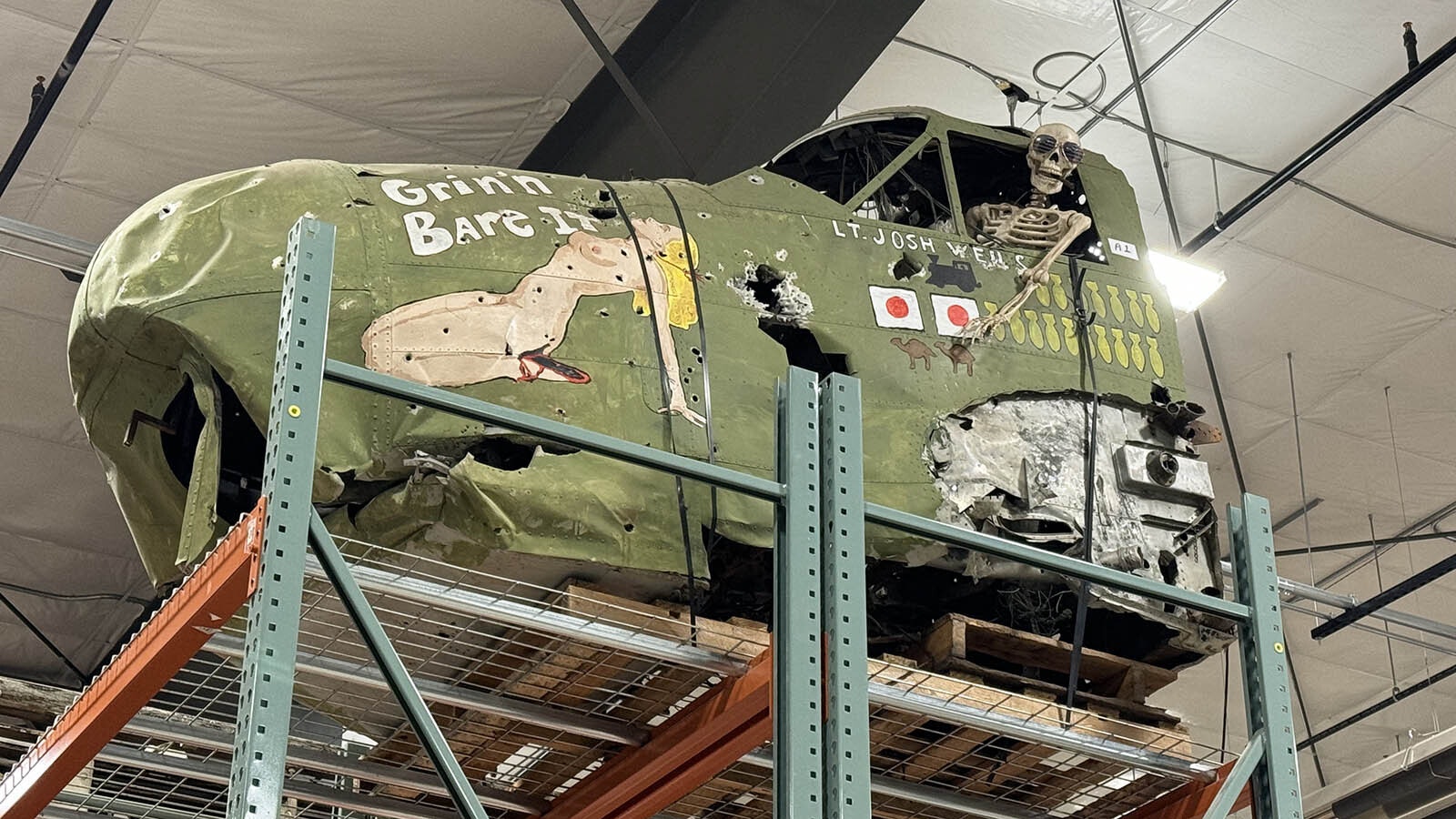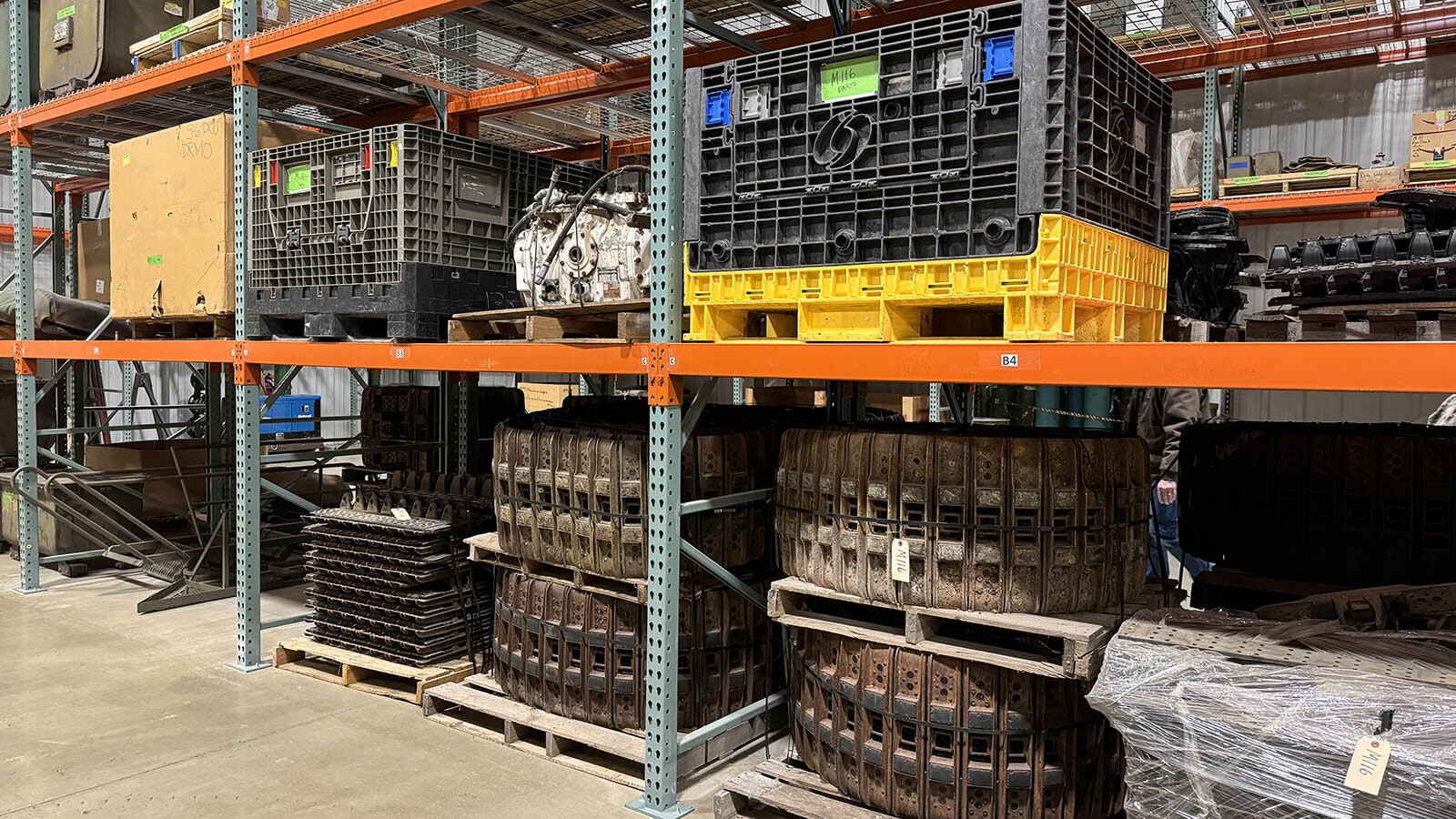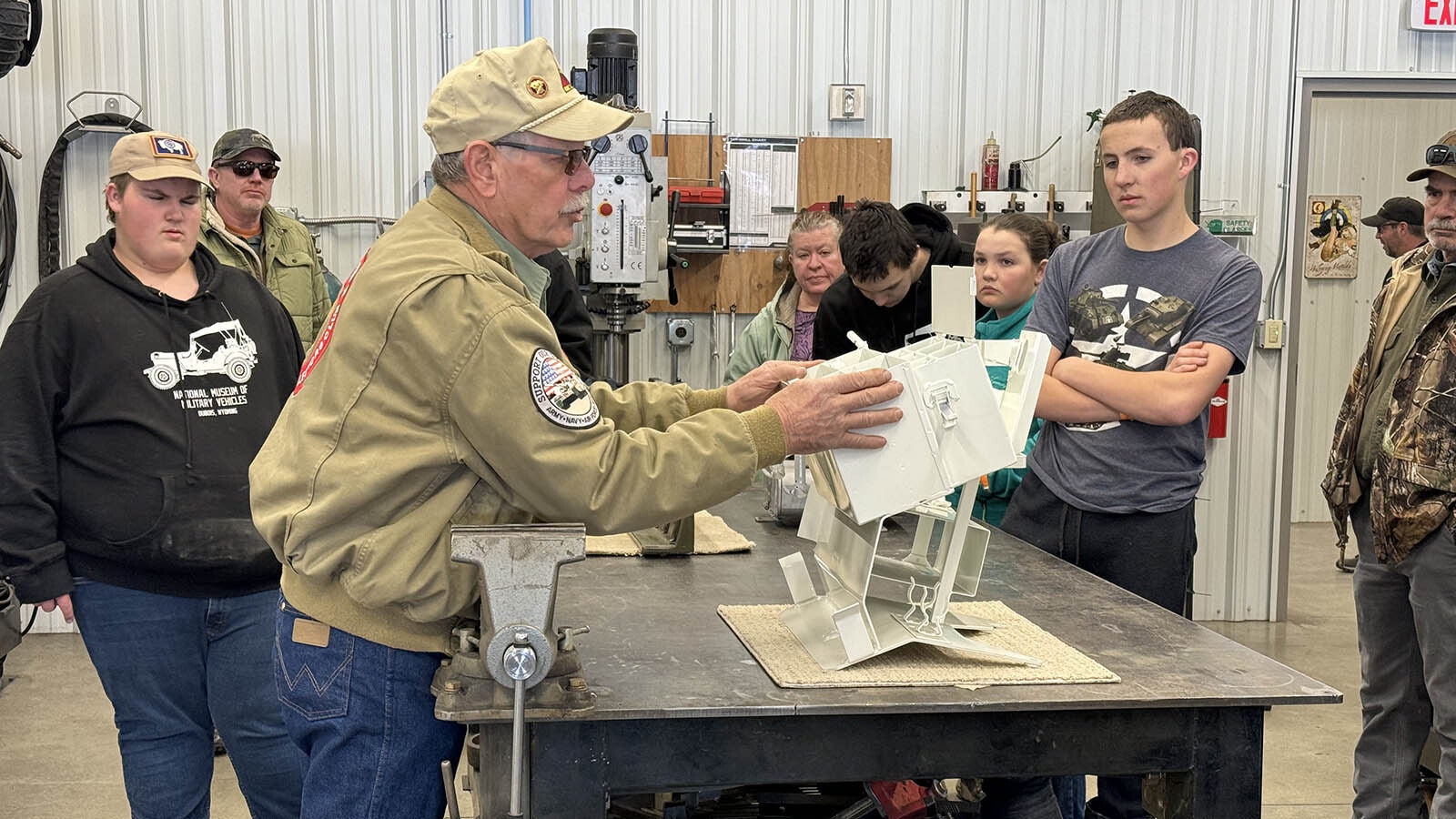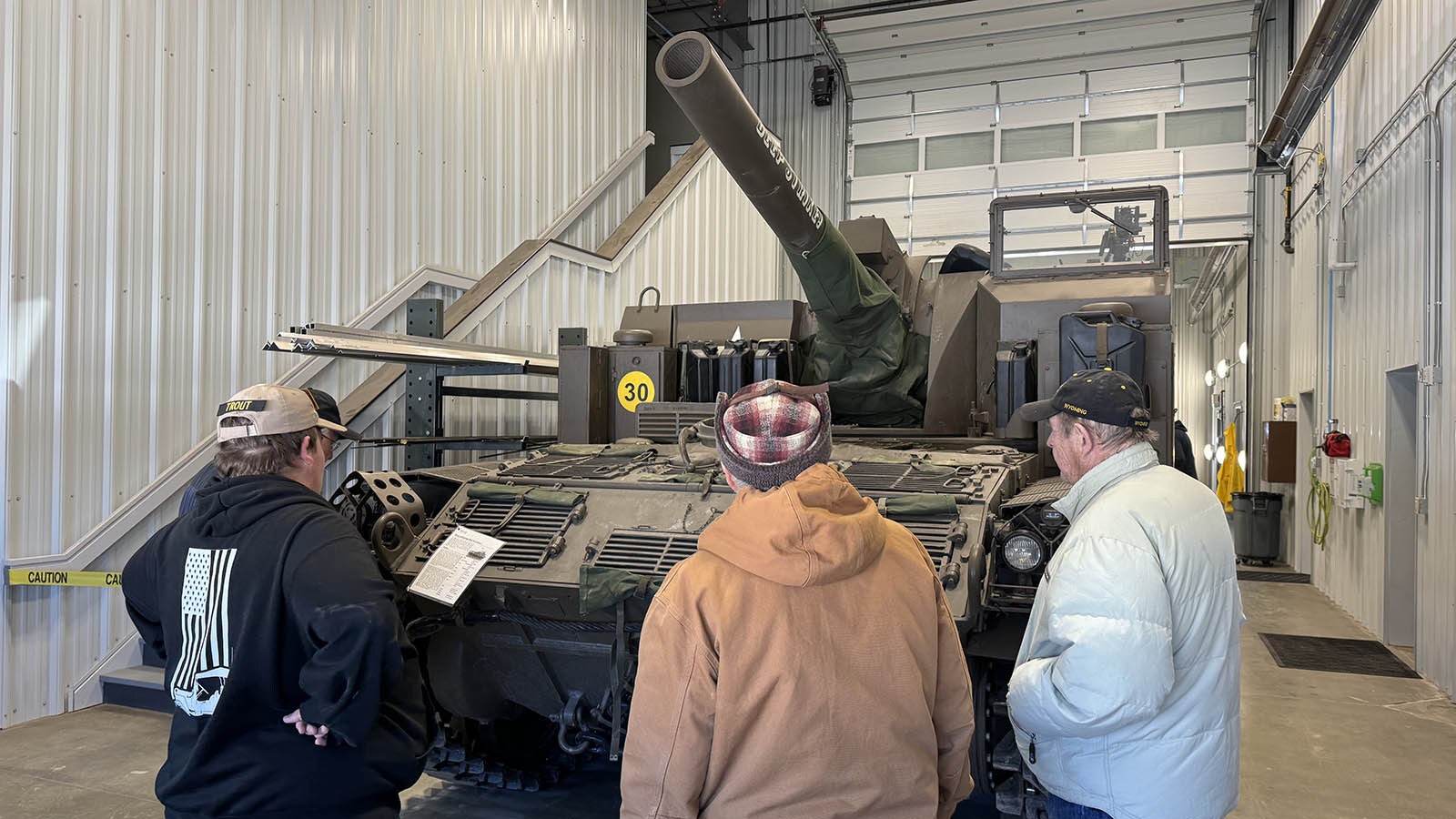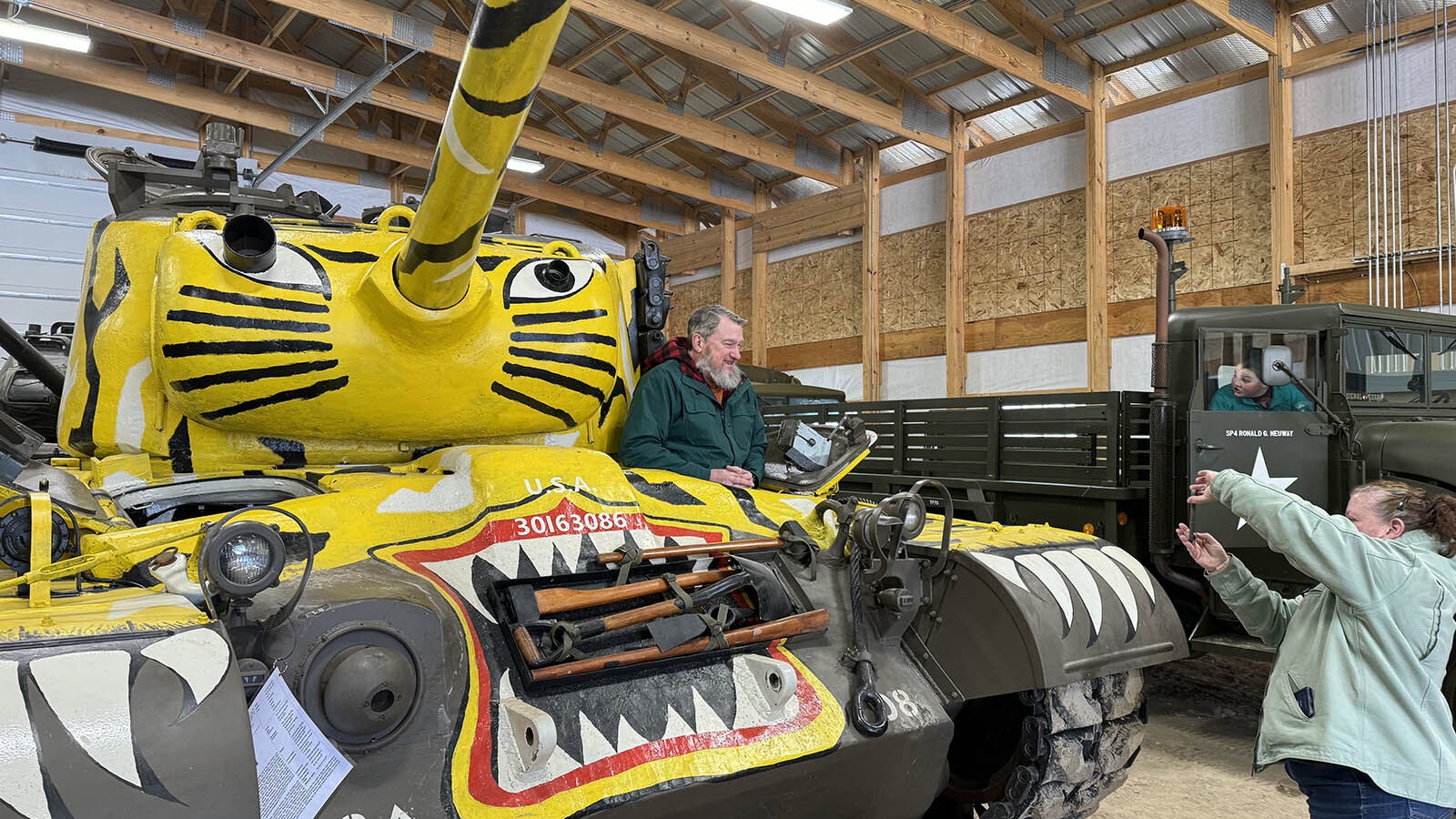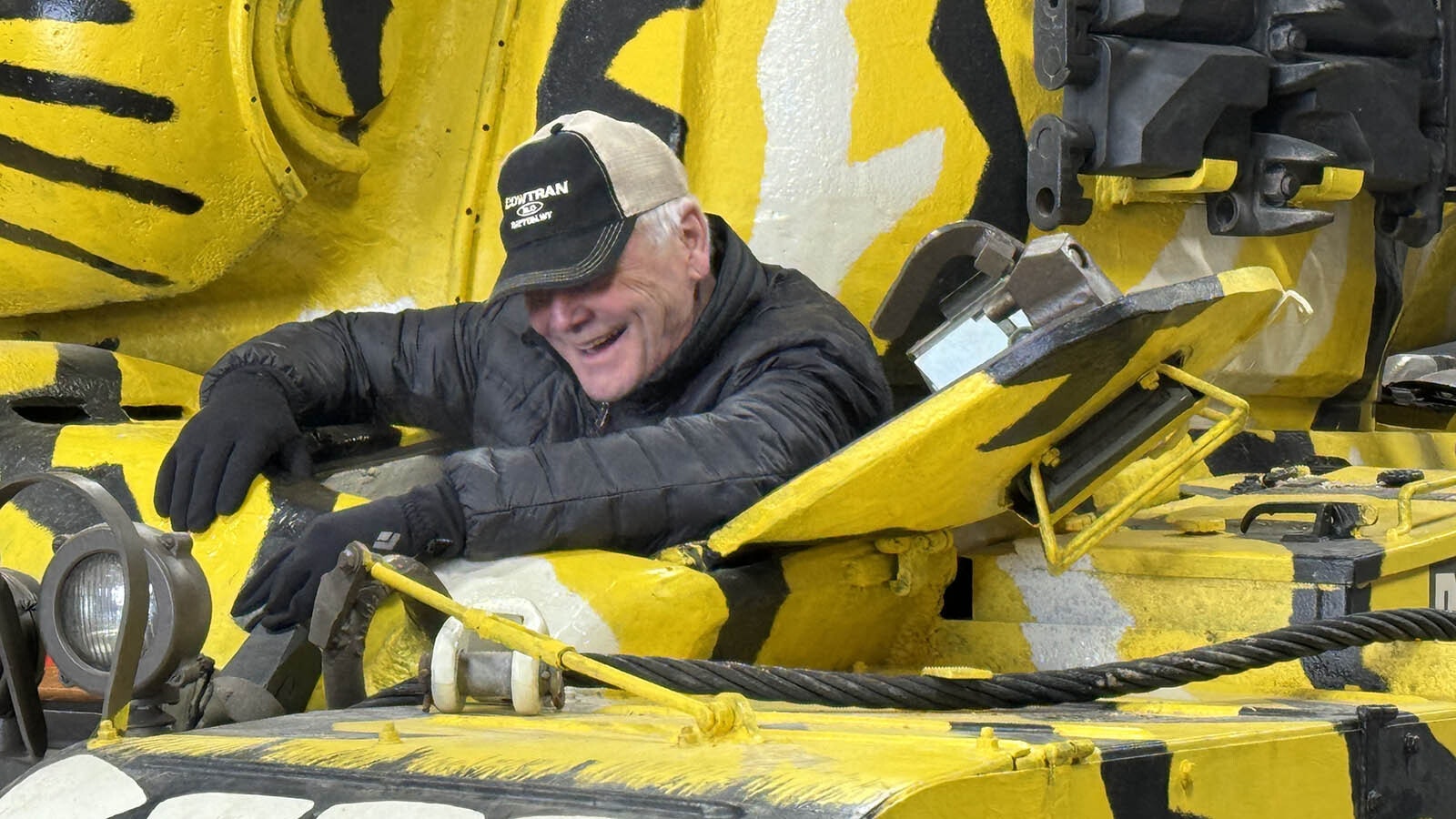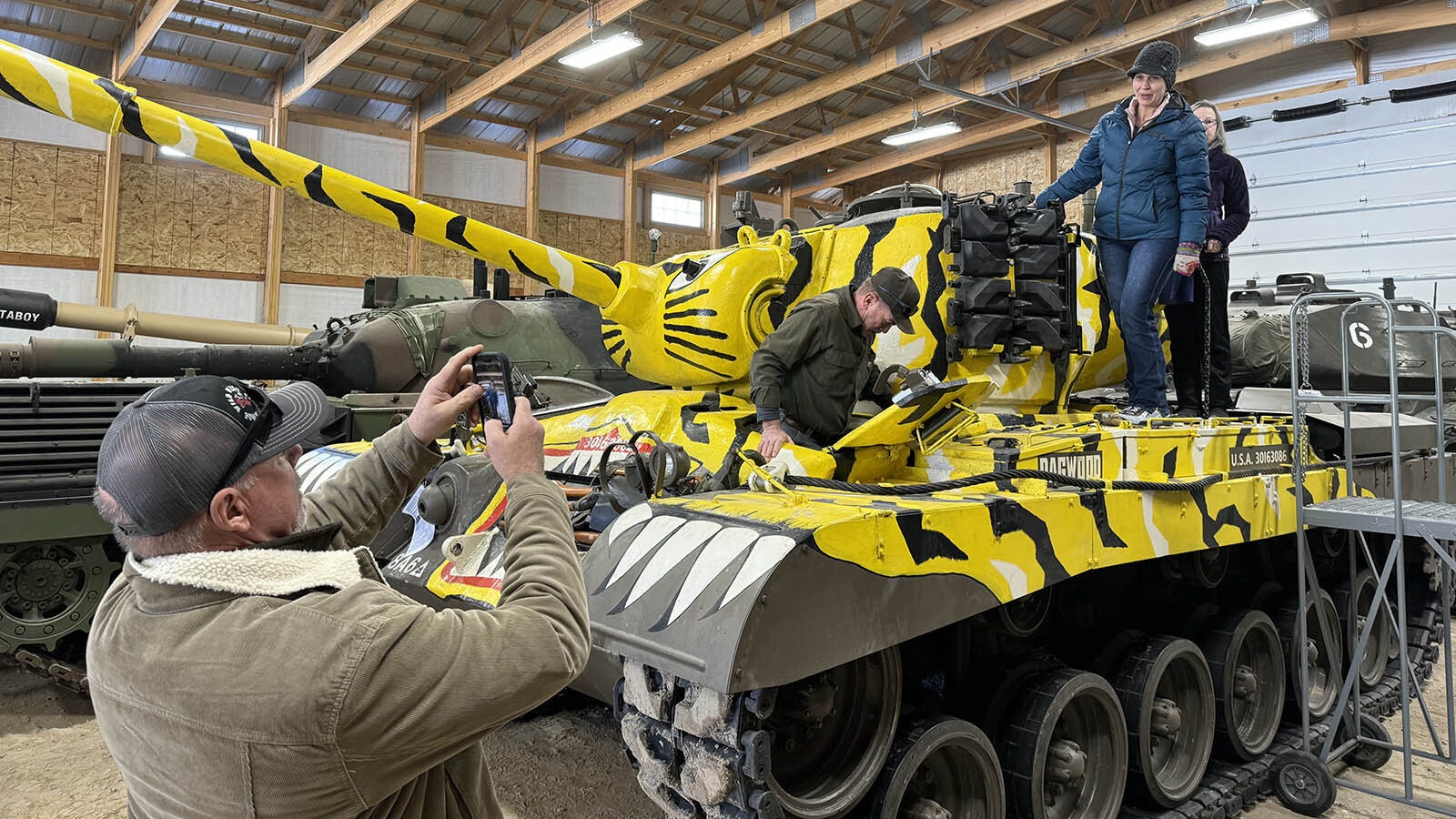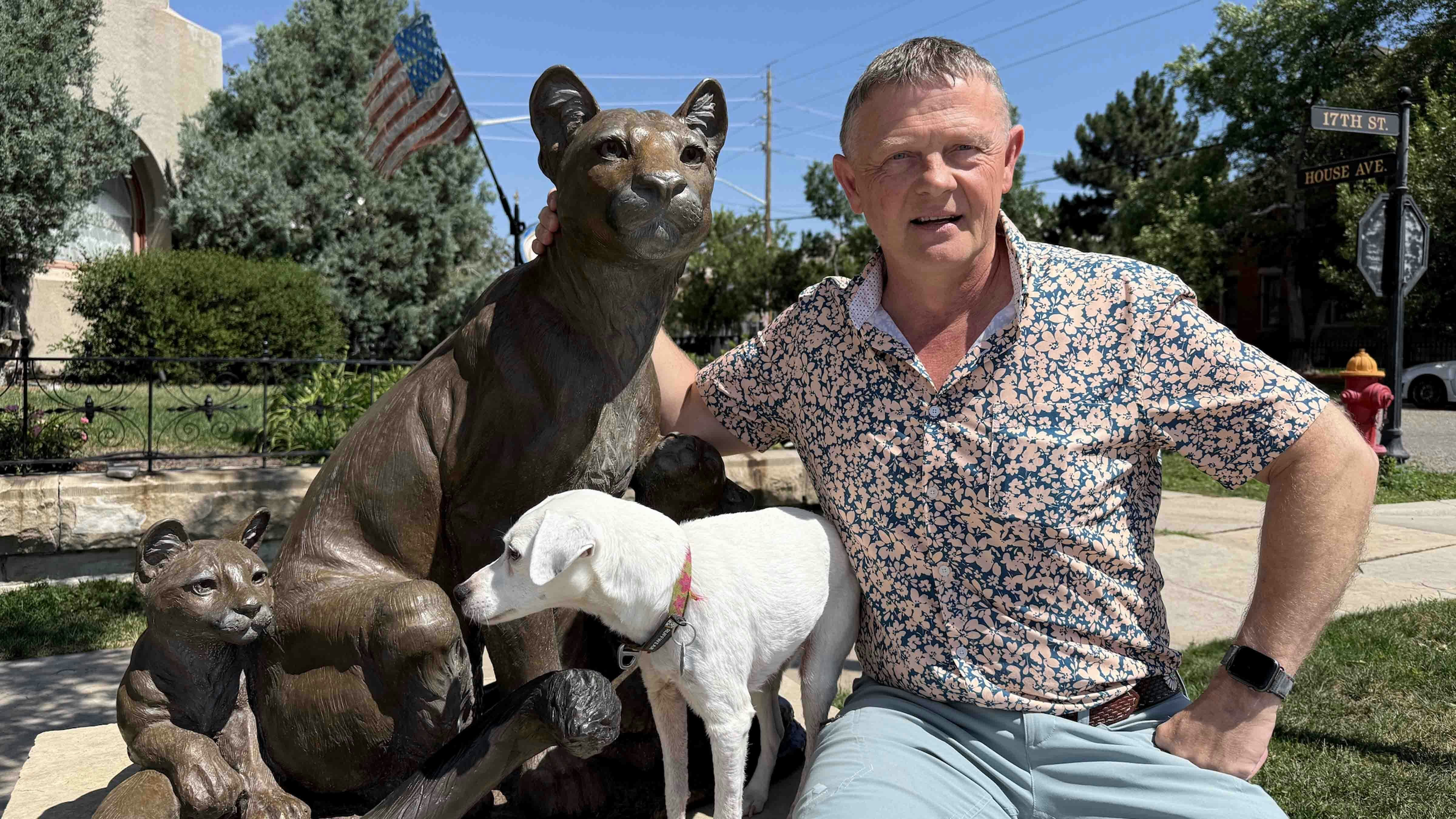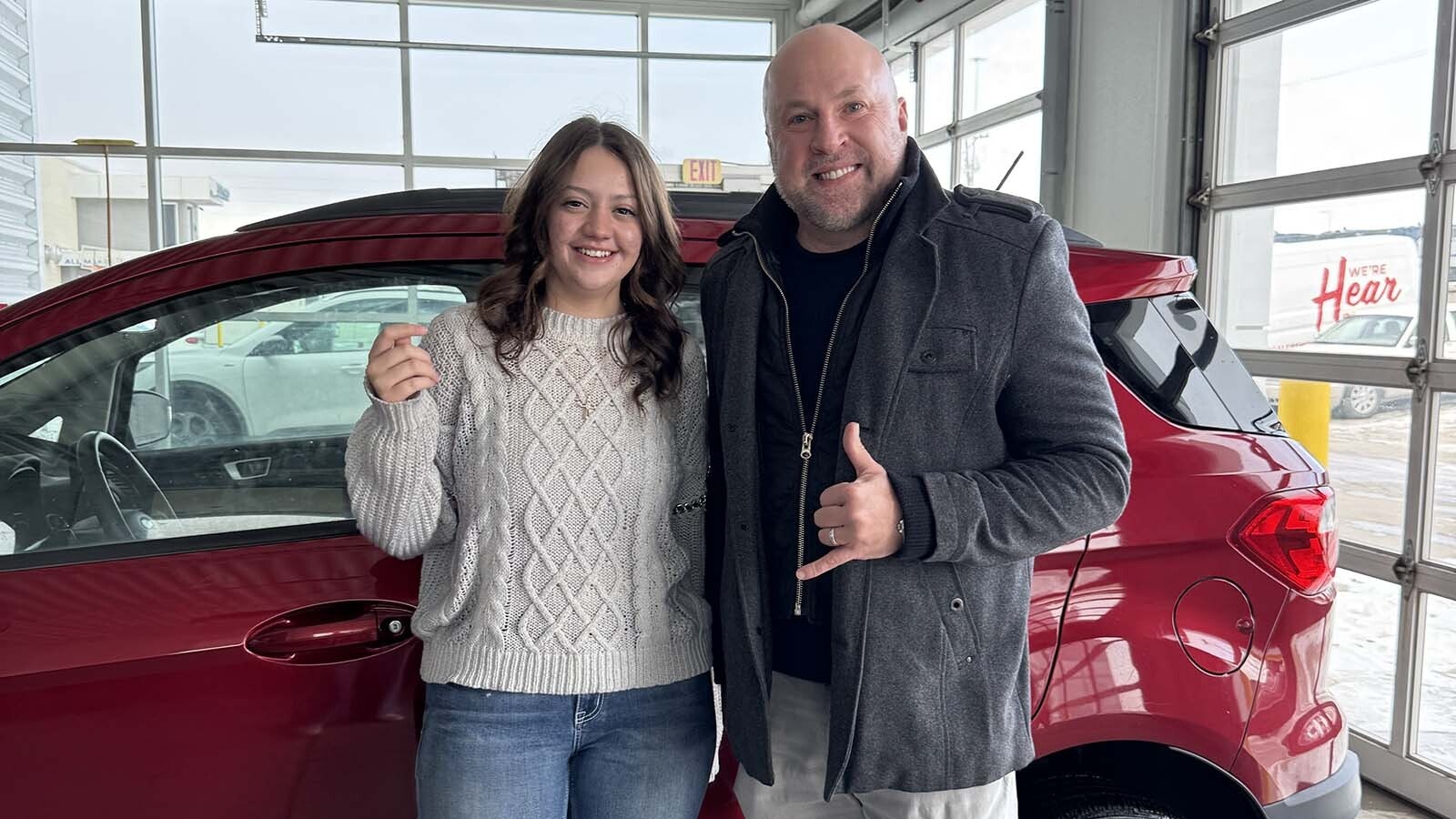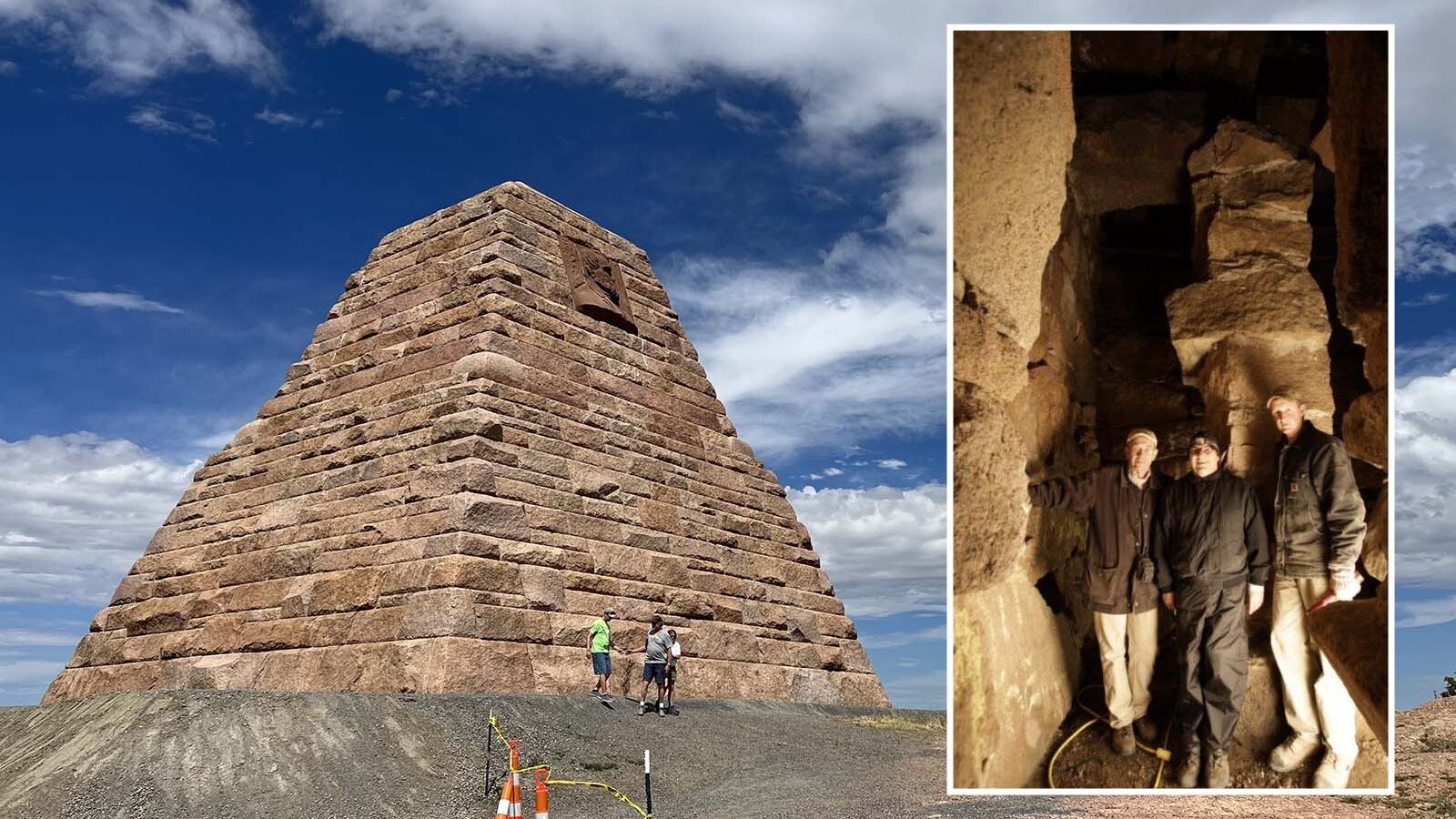DUBOIS — In most museums, the exhibits sit stoically. It’s look but don’t touch. At the National Museum of Military Vehicles, vintage U.S. tanks proudly parade and spin in the snow for spectators.
On a brisk February afternoon, a crowd of nearly 100 people watched as a 40-ton Kampfpanzer Leopard 1 rounded the corner, heralded by the distinct screech of tracked treads moving along its wheels. Then, with the poise of a master, the driver continuously turned the tank on its surprisingly small 15-foot radius, leaving a muddy circle in the snow.
Tanks, Jeeps and other military vehicles parading around has become more commonplace in and around Dubois, home of the National Museum of Military Vehicles, the world’s largest privately owned collection. But the crowd assembled this day was there for a rare behind-the-scenes tour of the museum’s tank restoration shop.
Once the Leopard returned to its lair inside the immense 160,000-square-foot facility, everyone rushed to their first stop on the tour. What awaited was a lesson in history and ingenuity, spearheaded by a skilled group of passionate locals who’ve made tinkering with tanks the career of a lifetime.
Pushing A Broom
The story of the National Museum of Military Vehicles starts with Dan Starks, the man who turned a passion for military vehicles into an internationally renowned tourist destination.
Michael Lamb's story started with a visit to Stark’s museum, followed by dreaming of a dream job there.
“I told my mom that I'd love to work in this place,” he told Cowboy State Daily. “Push a broom, I don't care. About six months later, my mom notified me they were looking for mechanics and a supervisor.”
Lamb, a Marine Corps veteran, sent his specs to the museum immediately. Within two days of applying, he was in Dubois meeting with Starks to discuss a position in the museum’s tank restoration shop.
The meeting went well, and Lamb is now the supervisor of the shop. He oversees the restoration of the museum’s expanding collection of military vehicles and the immensely talented crew of technicians bringing them back to life.
And occasionally, he pushes a broom.
It may be a dream job, but there's no time to nod off at the tank restoration shop. Lamb’s to-do list started long and keeps growing with the museum’s growing collection of more than 500 vehicles.
“Dan's got a really big list,” he said. “Hopefully, we'll all be alive long enough to do at least 10% of it.”
Moving Displays
Most museums that display military vehicles focus on making them look presentable for exhibits. In Dubois, the museum there does that and so much more.
Lamb and his dream team of mechanics and restoration experts are working on a new mission: ground-up restoration. The goal is for every vehicle that comes through the shop’s doors to leave under its own power, whether it’s a U.S. Army motorcycle or a 49-ton M48 Patton tank.
Complete restoration wasn’t the original mission of the National Museum of Military Vehicles. Lamb said an Independence Day Parade in Dubois drove the shift.
When he established the museum in 2020, Starks wanted a tank driving in the parade. Another massive building adjacent to the restoration shop houses the museum’s “parade fleet” of 18 vehicles, tanks included, that are now regular additions to the event.
Moving forward, every vehicle will be able to move forward. The technicians want to get every vehicle in working condition, whether it’ll be in a parade, sitting outside on a pedestal or inside as a museum exhibit.
“We’ve all got the same goal for every vehicle,” Lamb said. “All of these vehicles deserve our best to bring them back to what they were. To have it done authentic in the best possible way we can.”
Except for the cannons and other armaments. Those, are and will remain, inoperable.
Spares And Repairs
“Authentic” is one mantra stretched across a century of U.S. military history. The museum’s collection of more than 500 military vehicles includes one of the first U.S. tanks ever built from World War I, a helicopter that carried medics during the Vietnam War, and nearly everything that came between.
During the Saturday tour of the shop, the projects underway included a completely dissembled M4 Sherman tank, a Cold War-era M44 self-propelled howitzer and a Sherman M50, the “Super Sherman” from the Israeli army.
The shop has everything needed to tear a tank down and build it up again to be like it first rolled off an assembly line. A power-washing station, welding and machine shops and bays exclusively for sandblasting and painting, with the exact shades and specs to restore the colorfully authentic look of each military vehicle.
There’s even a 20-ton crane in the main bay, where the tanks are broken down and reassembled.
Then there’s the warehouse, one-stop shopping for a century of military vehicle parts.
Shelves upon shelves stretch the length of the massive space, with every part and piece of hardware Lamb and his colleagues might need — with a few extras just in case. Engines, axles, cannons, tires, tank treads wrapped like garden hoses.
Also stored there that afternoon were pieces of World War I vehicles, the cockpit of a World War II plane and one of the first drones ever used by the U.S. military (a Navy drone from the 1950s).
Lamb said there are no shortcuts in the shop. “Authentic” is not a frivolous boast, but the genuine embodiment of everything they do.
Whenever a new vehicle enters the shop, the technicians try to restore it with authentic hardware used in that vehicle. That’s why the growing inventory of pieces and parts has become so important.
“You can’t get these parts at NAPA or anything like that,” he said. “We reach out to people overseas, to the theater where we left a lot of that equipment after World War II. They've got a lot of stuff sitting over there, and we import back to the United States. There's a lot of searching, searching the internet, hooking up with other people in the industry.”
And if they don’t have it and can’t find it, they make it.
Do It Yourself
“Better get a hanky for your drool,” one appreciative visitor said upon stepping into the machine shop during the tour.
Inside, the technicians and tank enthusiasts manufacture new hardware to the precise specifications of the hard-to-find historical counterparts.
Lamb said creating new parts from scratch is becoming more common as certain pieces, such as a specific type of hinge used in a World War II Sherman, get harder to find in good condition. With a mission of ground-up restoration, every part matters.
Sometimes, a historic piece of hardware is measured, studied and built from scratch. Sometimes, Starks acquires a new collection that includes a vehicle with the parts they need or just crates full of various hardware.
“People bought or sold a tank, and they're selling their garage with it,” Lamb said. “We're able to capitalize on what came with that even though we weren't thinking about it (at the time).”
The best method to replace rare hardware is to use the specifications from original manuals shipped with the vehicles. Despite their age, some of those manuals still exist and make their way to the museum’s archives, and then onto the workbenches of the restoration shop.
Paperwork is among the most prized items in the collection. A new acquisition is always better when it has its papers.
Some vehicles are prioritized over others, but nothing is wasted. Any part that isn’t used to restore a vehicle makes its way into the inventory.
And there’s no assistance from the U.S. military. The museum and the shop don’t rely on access to national military archives or technicians. They either know it, learn it or find and acquire what they need.
“Every day, you dig, define, fix what you find, and fabricate what you can't find,” Lamb said. “We’ve got a lot of stuff going on to get us to that end goal and have an authentic restoration done.”
Phenomenal Effort
Callie and Toren True drove from Casper to attend the behind-the-scenes tour of the tank restoration workshop.
“We've been through Dubois hundreds of times in our lives but never did this,” Callie said. “So, this was a good excuse to come.”
The Trues expected to see and be impressed by a long line of immaculately restored tanks. But like most people on the tour, they were awestruck when they saw and learned about how immense the effort is.
“I've worked in restoration,” Callie said. “I understand the processes. You get an old, dilapidated something that needs work, and then tear it down to the bones and build it back up. And it's a phenomenal amount of work. And they do a great job here.”
Callie took in everything with an informed opinion, examining the big and small details of the vehicles in the shop.
“Even the frame and the suspension, everything has had detail. It's all been worked on and checked over,” she said. “None of the bolts are rusty and going to fall out. It’s done well here.”
Toren was impressed by another “authentic” restoration aspect that can’t be found in a history book or a vehicle manual. The museum and restoration shop also recognize the value of human experience.
“The attention to historical detail struck me,” he said. “They brought people in who served in these vehicles and said, ‘What did you think of this? What should go there?’ If something was missing, they'd ask and bring these people in.”
Tremendous praise and admiration also went to Starks for investing so much into such an ambitious project in a small Wyoming community. Starks was on-site the whole afternoon, sharing his immense knowledge of every vehicle and acquisition in the collection with the group of increasingly excited visitors.
His passion was evident.
Toren was impressed that Starks wasn’t just “some rich guy moving here because they like Wyoming, and they want it to be like where they used to be. He’s not like that. You can see it.”
“It exceeded any expectations I could ever have hoped for,” said Callie. “We have this beautiful facility in Dubois. A man with a lot of money comes here and builds something beneficial for the whole country in this little area. I’m really blown away by that.”
Kids At Heart In Tanks
When looking at the National Museum of Military Vehicles and the tank restoration shop now, compared to when he started, Lamb still sees an enterprise at the beginning of a rich, fulfilling life.
“I think we're maybe not in the infancy stage, maybe grade school,” he said. “Someday, we want to be at the college level.”
For Lamb, reaching “the college level” means continuing the mission they’ve embraced since his arrival. Gathering more vehicles, parts and experience to turn dilapidated vehicles into living, moving history honoring the nation, its military and its veterans.
“We’re acquiring special tools to help us do the job we need,” he said. “We're lucky enough to have a great facility at our disposal, with a lot of spare parts that have been acquired prior to us doing any of this kind of stuff. It's a struggle, but it's a good struggle.”
The afternoon tour of the shop had every visitor whirling around to see the next big thing around the corner at each stop. However, the highlight for most was the “hands-on experience” with the parade vehicles next door.
The tank restoration shop might be aiming for the college level, but a room full of tanks and trucks brings out the grade-schooler in everyone. Children and adults gleefully clambered over treaded tracks and lowered themselves into hatches in a playground of military history.
Toren True was all smiles as he gazed out of the hatch of an M46 Patton tank.
“This isn’t a job,” he said. “This is summer camp!”
That same enthusiasm drives Lamb and his immensely talented team of tank enthusiasts. The mission is to do the most authentic restorations possible, and their work at is a heavily armored, deafeningly loud and laborious slice of heaven.
Andrew Rossi can be reached at arossi@cowboystatedaily.com.

